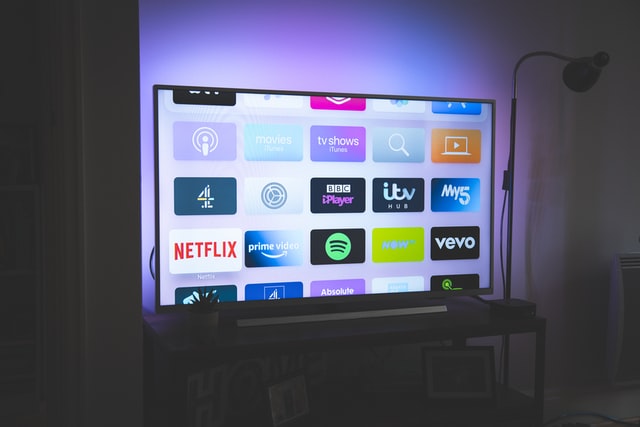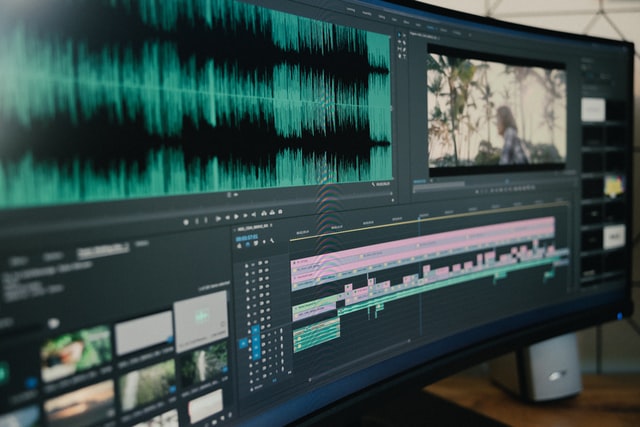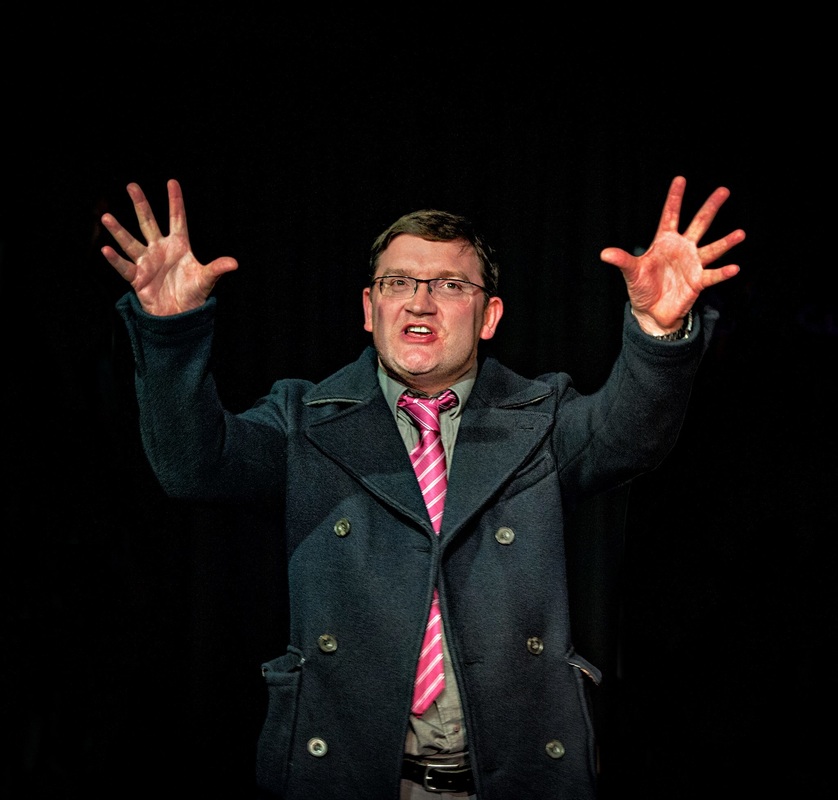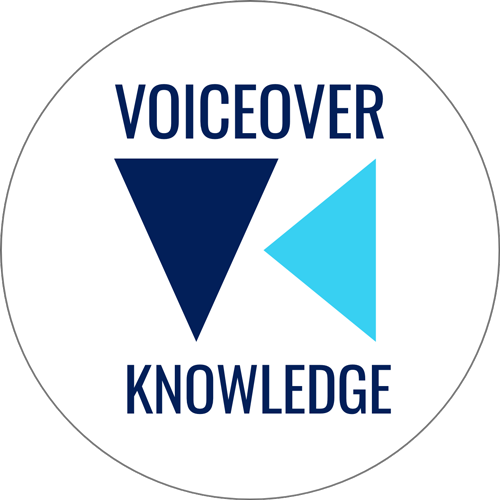
Table of Contents
What Should My Voice Over Rates Be?
This is one of the hardest questions in the business. I know so many people who wrestle with the question.
Issues of self-confidence and imposter syndrome can get in the way of clear analysis of what you’re providing and the appropriate charge for it. Hopefully, this information may provide a steer.
Pricing and UK Law.
I’m basing this primarily on my experience, which is mostly UK practices. Some of the principles might be helpful to those in other countries.
The first thing to point to is that laws have changed over the last 30 years. Unions have less powers, and operating a “cartel” or price-fixing is illegal.
This means that most prices you will read about can only ever be guidance. Rigid pricing can only be followed where there has been negotiation and there is a collective bargaining agreement in place. Some sectors, notably local radio and gaming have such agreements in place.
I can tell you about common practices and typical rates. I can’t tell you what to charge. Let’s start with some broad principles.
Licensing.
Like other creative industries, voice over use is typically supplied under licence. The voice over artist retains ownership of their material and licenses it for use by the client. The cost will vary according to the extent of the use required.
This means that often you will charge both a BSF and Usage fees.
What Is A B.S.F. (Basic Studio Fee)?
A Basic Studio Fee is a charge made by the voice over artist for each hour you spend in a studio recording for a client.
It is a charge for your time only. It is not a fee for the hire of the studio. It is for time in studio, not the duration of the recording.
It is not a charge for usage of the material – unless the material is 100% internal use only.
Usage Fees.
When you record and charge a BSF as listed above, you will normally agree a usage fee to be added. Often, this is described as a percentage (of the BSF). e.g. 100%. This is a concept worth getting your head around, as it comes up all the time. It means that if you charge a BSF of £250, and the usage is 100%, you will charge an additional £250 for the use. A total of £500.
Apologies if this is sucking eggs, but sometimes this topic gets muddled.
NOTE: The usage is a percentage of a 1 hour BSF. So, if you took 2 hours to record, and the usage is 100%, then you might charge £500 for the recording fees, but only £250 for the usage – 100% of one hour’s recording time.
2nd NOTE: The usage fee is for each ‘product’ that comes out of that session, so there may be multiple usages from one BSF. So, if you go into a studio to record 3 short videos, and they are all recorded within 1 hour, you would charge your BSF x 1, but you would charge a usage for each of the videos made.
Of course, deals are done. It’s up to you to find an appropriate offer, should the client ask for it. The key point here is to at least understand the pricing structure, so you know what you’re discounting, if you do.
My own take on offering a discount is that there should to be a reason. It’s not a default starting point. For a client buying 4 videos you might offer one. For a client contracted to buy 1 video per month you might offer another. Here you’re essentially rewarding bulk or repeat business. A client suggesting there’s “more where this comes from” would need to make a firmer commitment. Often that’s just a negotiating tactic and it turns out there isn’t.
Voice Over Rates For Television.

Photo by Nicolas J Leclercq on Unsplash
Usefee is your friend. (https://www.usefee.tv/)
Usefee has been around for years, and is supported by Equity and Spotlight. It has an online calculator that allows you to price a voiceover based on your B.S.F and the TVRs.
What is a TVR?
A TVR stands for a Television Rating. It measures how popular a TV programme is, allowing for the commercials around it to be priced according to likely viewing numbers.
For our purposes, we would generally stick to a “Network Adult TVR”, rather than other segmentations.
Think of the entire UK adult population watching television. This number is calculated as 49,000,000 adults. A TVR is 1% of this. That’s 490,000 adults.
So, 5 TVRs would be 2,450,000 views. It best to think of these as views rather than people, because over time, people will see an ad more than once. 2 millions viewers each seeing an ad 4 times is 8 millions views, or 16.3 TVRs.
This means there is a huge difference in audience between a commercial shown on a weekday afternoon, reaching 200,000 viewers, (0.41 of a TVR), versus an advert shown at peak-time during Coronation Street, reaching 8 million viewers. (16.3 TVRs).
Obviously, most commercials are shown more than once. Most would be part of a campaign, used over a period of time, shown on various channels at various times.
An advertiser will know how much they are spending and how many TVRs that spend will get them. It’s part of the media buying process.
Some times the production house you are dealing with genuinely might not know the TVRs, because the client is holding that information back. In this situation, you are being unfairly asked to give a price. If I walk into a carpet showroom and ask them to carpet my living room, their first question will probably be, “How many square metres is that?”. Without that information, they can’t give me an accurate price.
In other forms of advertising there are similar terms used and calculations for pricing. “Impacts” is often used in radio. “Impressions” is often used online. Both are the numbers of views or listens an advert receives. These are often priced into thousands, with a related price. These might be called “CPT” – Cost Per Thousand, or “CPM” Cost Per Mille (Thousand).
Notes:
BSF is Not Included in Usefee Figures.
The Usefee site asks for your BSF to enable it to calculate usage, but it is not concerned with BSF otherwise. That is a charge you make for recording. So your BSF is not included in the numbers it generates. Add your BSF (where applicable) on top of any fee generated by Usefee.
One-Off Transmission Fee.
For a new campaign there is a ‘one-off transmission fee’ equivalent to the BSF. This charge is made for new campaigns, so not re-runs.
Working Example : A new campaign.
Let’s say you record in a studio for 1 hour for a TV Commercial.
Your BSF is £250.
The campaign will have 900 TVRs.
This is a new campaign.
If you enter this information into Usefee it gives the result of:
“Fee due £8625.00. On the basis of a BSF of £250 and a Network TVR of 900. Includes a one-off transmission fee equivalent to the BSF.“
This number excludes your BSF, but does include the one-off transmission fee. So you would invoice or be paid: £8625 + £250 (BSF). £8875.00
International TV Rates.
For UK-based voice over artists, there is a tab on Usefee that is often overlooked covering International rates. There is a separate page covering US and Canada, but for most other territories, they suggest a percentage of BSF rate for each country. It is only a suggestion but can be a useful guide.
What is a Buy-Out?
Often in TV commercials and other usages, the term ‘Buy-Out’ is raised.
I think it’s important to be clear in any communication, exactly what you and they mean by that. Some people take it to mean a complete ‘Buy-Out’ as in they own the voice over to use as they see fit, forever more. (In UK law you can’t reassign moral copyright).
Others see a ‘Buy-Out’ to mean a licence to use the voice over in a particular way or sector, without additional fees.
So to offer examples: The first meaning would allow someone to record you for a video, and ‘buy-out’ the audio. Then it could turn up in a TV commercial , or be repurposed in some other way. You’d be stuffed.
The second meaning (which I tend to work to) is that you agree to a particular use, but without additional variable fees. So for example, you might agree to a TV commercial use for 12 months – without referring to TVRs.
The key thing here is to understand how much you are potentially losing. A major campaign of 400 TVRs per month, over 12 months could be £24k to the voice over artist.
Buy-Outs are commonly about saving the advertiser money, by paying you less. Again, that’s fine as long as you understand how much you are losing by accepting these terms.
What Are Edits, Lifts, Cut Downs, Versions, Tags?
They essentially are changes made to a commercial that don’t involve you voicing additional material. They are changes done in the edit. The material may be edited to change what you have said. They may ‘lift’ a line from somewhere else. They may cut-down a 30 second version to create a 10 second version. Usually, this is done to create additional commercials.
This is something you should be careful about, especially if you are asked to record additional content in the session and this area of the contract is a little grey.
Let’s say the contract says they can use Edits, Lifts, Cut Downs, Versions, Tags freely within that buyout. This means that you record a 30 second commercial, but they are free to edit that down into a variety of shorter ads. They add different tags to the commercials for seasonal uses like Christmas and Easter. They squeeze every drop they can out of that one commercial you recorded. And you get paid once.
Advertisers like to rotate copy. They like to freshen up their ads, because otherwise viewers lose interest. Because you agree to a buyout with use of edits, lifts, cut downs etc, you got paid at a very poor rate. Some contracts may even go a step further, in explicitly stating that the client has full rights to everything recorded in the session.
Use A Voice Over Agent?
A Voice Over Agent is the perfect expert to handle these kind of negotiations, although many new voice over artists might not be on the books of an agent, yet. But guess what… When do you think is the best time to approach an agent? Answer: When a client is offering you money for a job. For most agents, taking on voice over talent is a judgement of whether their effort and investment in you is going to bring in any money. You’re a risk. If you walk through the door with a job in-hand, then you’re a sure fire hit.
Voice Over Rates for Radio Stations.

Photo by Mehmet Turgut Kirkgoz on Unsplash
Voice over rates for radio can be surprisingly poor in the UK, depending on the station(s) and how the commercial is being produced. Understanding the history helps us get to where we are today.
There used to be 2 rate cards. One was for ILR (Independent Local Radio) Stations who produced commercials in-house. The other was the Agency Rate Card intended for agencies and other producers.
The History Of Local Radio Commercials Rates.
Back in the 1980s, voice over artists used to visit radio stations in person to record commercials. Typically, they would be booked for a 1 hour session, and could record as many as 5 commercials in that session. Then along came ISDN technology, which allowed voice over artists to be based in home studios. Accordingly, the agreed rate was divided so that you would conduct a short session around 15 minutes in order to record one commercial. This suited voice overs who saved on travelling. It also suited radio stations, who could now have more variety in voices on commercials.
I have a memory of a 1 hour session being £55 and the new ISDN sessions being £11, but per commercial. This rate varied by station, but gives you an understanding of how this rate came about.
Agreed Local Radio Rates.
For many years there was an industry rate card which was followed. This fell away in recent years, because Equity could no longer impose rates. Instead, today we have the Global and Bauer agreed rates. This is to say that negotiations are conducted with these 2 radio groups, who own the majority of commercial stations, and a rate card is produced.
It’s important to be clear that only stations in these groups are bound by the rates. Other stations are listed, simply because a commercial destined for them might be produced by Global or Bauer. It’s not uncommon for an advertiser in a town to use the same commercial on multiple stations, so if Global or Bauer make that ad, the agreed fee will relate to its use on those other stations.
Most radio ad sessions are very short. 10-15 minutes long. Fees for each station fall into 8 bands depending on station size. The bands start at £27.05 and go up to £831. No BSF is paid on these sessions.
Sometimes a client or someone else not employed by the producing station might want to listen in and give feedback on the session. Where this happens for a radio commercial, there is an additional charge made, because invariably this will make the session far longer. This ‘Client Attendance at Session’ fee is £137 at the time of writing.
The other factor to consider regarding local radio fees is that the fee is per station, per 12 month period.
So, if you voice commercials used on multiple stations it can become more lucrative.
Also should the commercial be used in any other way, additional charges should be agreed. Examples might be that the client wants to use the commercial on their website, play it in store or to callers on-hold.
It’s worth repeating that the rates above only apply to Global and Bauer stations, or ‘their appointed production houses’. The original ILR Ratecard agreement was conceived to help the ‘ailing’ commercial radio sector back in the day. By agreement with Equity they had a preferential rate compared to external producers. The aim was to keep the work internal at stations and thus more profitable and less likely to go bust.
Most voice overs will work for other commercial radio stations on the same basis, but third parties, such as advertising agencies are outside the scope of this agreement.
Agency Radio Rates.
The Agency Rate Card also fell away a number of years ago, presumably because of competition law. It had served though to provide a business model that many voice over artists still work to today. Essentially, it is a BSF charge for recording, and an additional fee per station for 3 months use. The fee per station is usually in the region of £40-60.
Tags, (“Sale ends Friday” or “Sale ends Tomorrow”) are recorded for commercials are generally charged as another commercial.
Voice Over Rates for Online Use.

Photo by Jakob Owens on Unsplash
There are several really important things to understand about online use. They are all related to the likely exposure the content will receive over a period of time. The usage you charge should reflect the benefit derived from using your voice. There is a serious difference between 300 people hearing your voice and 3 million. Ask yourself (or your client) these questions:
Question 1. Is The Content Paid Placement or Organic Placement?
This is also sometimes referred to as ‘active’ use or ‘passive’ use. Either way, it amounts to the same thing. If I put a video on my website, it will only ever get a certain amount of traffic on its own. If I choose, I can pay to have that video shown on YouTube, Facebook and many other platforms. Paid placement is basically the same as Television. In fact, if anything it’s more targeted and efficient. Depending on your budget, that video might be seen by millions of people. A video placed organically on a company website might only reach a few hundred.
Question 2. How Big Is The Brand?
If Tom’s Sportswear Shop on my local high street is having a video made for his website, then it’s likely to be a completely different affair than a high-budget film being made for a global brand, such as Nike. Again you need to take this into account. For really small brands, I might discount usage, or raise it for large corporations.
Question 3. How long will it be used for?
Any content that you licence for use in the public domain has the ability to impact your working with competing brands in that sector. Large brands will often detail ‘conflicts’ on their casting calls, which will rule you out if you have rival content out there. This is one of the reasons you should never accept in-perpetuity commercial use. Unless they are offering you enough to retire.
Working Example: Client Video on a Website:
We start with a BSF (Basic Studio Fee).
Usage: When charged as a percentage, 100% would be fairly typical for a low organic use.
For a high end, global brand, you could expect 400%. Paid use as a percentage can be in this region too.
Pricing might also be charged by impressions. In this instance, you could use Usefee (see TV ads above), treating 490,000 impressions as 1 TVR.
Scope of use.
It’s common to licence an online video for 12 months. Sometimes you might agree to a longer term, but price accordingly.
Self-Record and Retakes / Revisions.
It’s becoming increasingly common for lower end projects to be self-record and supply of the voice over. One pitfall of this, is where the client or production house isn’t very specific about direction.
Some may ask about retakes or revisions, which is understandable, as they are looking to nail down costs before committing to a project. The problem occurs when the end client knows they have two goes at something, and they treat the first as a kind of practice run… a fishing expedition. For a shorter duration project, I will offer a retake if the client is unhappy, but on the basis that I am given clear direction the first time around. If the client wants to be heavily involved in the nuance of the take, or they simply don’t know what they want until they hear it, then they should really be undertaking a live session.
To clarify terminology, a retake is where you do the same script again. A revision is where something has changed. Revisions should be charged for as it’s additional work. It’s worth laying these out in your terms.
Voice Over Rates for Audio Books

Photo by Robert Anasch on Unsplash
Despite training as an actor, when I scratched the surface of audio book work, I decided frankly it was too much work for too little reward.
If you’re an avid book reader then it might be right up your street. Doing something you love often doesn’t feel like work.
I realised that to do a good job, you first have to read the book all the way through. You then have to craft profiles for each character and the narrator. You need a consistent accent and style for each one, so that it’s obvious who is speaking. You need to understand the story arc. You need to be emotionally prepared. You then need to record thousands and thousands of words.
Depending on the process you’re involved in, you might need to edit the audio and meet very specific criteria about audio quality, processing and delivery.
Directed Session or Self Record?
Some audiobook sessions are recorded with an engineer, either in a studio or remotely. The difference here is that you are only responsible for performing the work. The editing and post is handled by someone else. This will be reflected in the rate.
In some scenarios, you are taking on more of the project, and you are expected to deliver edited audio files. Here I would expect to be paid more. Covid-19 changed the way some companies work, and their rates may not be reflecting their revised expectations.
This is not my sector, so my information on price is very basic. I’ve heard talk of rates of £80 per recorded hour, for recording in-studio in the UK. This is just performance. You don’t handle the recording or edit. Often this might be bundled up into 2-3 days’ work as a typical book can be 10 finished hours.
For self-record rates in the UK I would expect it to be in the region of £125-200. The US tends to pay around $225 upwards.
Voice Over Rates for E-Learning

Photo by Element5 Digital on Unsplash
E-Learning generally has a different pricing structure, based on either word-count or duration. This assumes that we are talking about genuine e-learning content that is destined for a company’s internal use with its staff.
Price per word.
The price per word is technically the spoken word, although the difficulty in measuring this means many overlook it. So, for example, the number “124” is 3 words if said as “one two four”. Acronyms: “HMRC” would be 4 words.
Word counters like those on Microsoft Word and Google Docs are very useful, but they miscount these types of words.
My own take is that you make a judgement by scanning over the script. If it’s littered with numbers and acronyms, you might want to have a conversation with the client.
Typical prices for standard internal e-learning can range from 15-35p per word.
Voice Over Words Per Minute
For word count vs duration, a good average is 150 words per minute. I use this figure to convert my price per word to price per finished minute if I need to provide a price on that basis. So, 20p per word would be £30 per minute for example.
Here are some other considerations to take into account: File splitting and technical language.
File Splitting Charges.
Sometimes a client may ask you to deliver the 30 minute recording separated into 200 different files. Until you come up against a project that requires this, you probably won’t think about it. File splitting can be time consuming and you need to price it in. Typical rates can be around £1 per file.
Technical Language.
This can be a judgement call, but technical language tends to have a higher price per word. Especially in the medical sector. Getting pronunciations right on complicated words or terminology again can add to the time needed to do the work.
E-Learning Voice Over Priced By Session.
On some e-learning projects, live direction may be required, so you will work in and charge for a live session based on your BSF instead. The price per word above usually assumes that the audio is edited. Live sessions will often be just that, so the editing is taken care of at the other side.
Non-Internal Use E-Learning.
It’s worth understanding how the E-Learning industry has evolved in the last few years. It is constantly changing and innovating how it provides to its clients. It’s increasingly common for content to be made that is intended for resale in a directory or to be repurposed for multiple clients. The original idea behind the pricing of e-learning was that it was for internal use. This moves the goalposts somewhat and you may want to be aware and adjust your price appropriately if needed, as it could now place your voice in the public domain.
Voice Over Rates for IVR / On-Hold.

Photo by Annie Spratt on Unsplash
IVR is another sector with a different pricing model. It’s often paid by the prompt.
Depending on the terms you agree to, there may be some control of the maximum number of words per prompt. There may also be some distinction between “comfort messages”, “your call is important to us” vs on-hold marketing messages which are explicitly commercial messages for products and services.
Rates vary, but at the low end of the scale can be around £5 per prompt. There is also a significant distinction between voicing a prompt for a production company, which then does all the editing and other work, and a situation where a client may book you directly. The fee for the latter would be considerably more, as there is more work involved and higher production expectations, such as the inclusion of licensed music (which can be a minefield).
If you become the chosen voice of a large brand, this can be worthwhile, as it’s a regular supply of work.
Some voice overs put a minimum fee in place so as not to initiate a session for just one prompt. This depends on the terms you agree to with the market players.
Voice Over Rates for Gaming.

Photo by JESHOOTS.COM on Unsplash
Again, I’ll put my hands up and say it’s not my area of expertise, but to the best of my knowledge, most recording is done in sessions with a BSF paid. Depending on the level, you may get anything from 50% of BSF upwards.
It’s worth noting that in December 2021, Equity – the UK actor’s union announced that it had reached an agreement with OMUK a leading voice studio in London. The agreement lays down a higher hourly rate on a sliding scale depending on the project size, but doesn’t include any additional usage.
Other Sources of Voice Over Rate Information:
There are 2 very useful guides available to consult for advice on rates. In the UK, there is the Gravy For The Brain rate guide. In the United States, the Global Voice Acting Academy has produced the GVAA Rate Guide.
About The Author

Tony Collins-Fogarty
British Voice-Over Artist and Actor
Tony Collins-Fogarty is a British Voice-Over Artist, with a background in broadcast, alongside training as an actor. His radio career began in 1988. He began providing voice-overs regularly in 2005, becoming full-time in 2012. Commercially, he is best known as the brand voice of Tripadvisor, on TV in the US, Canada and the UK.


Social